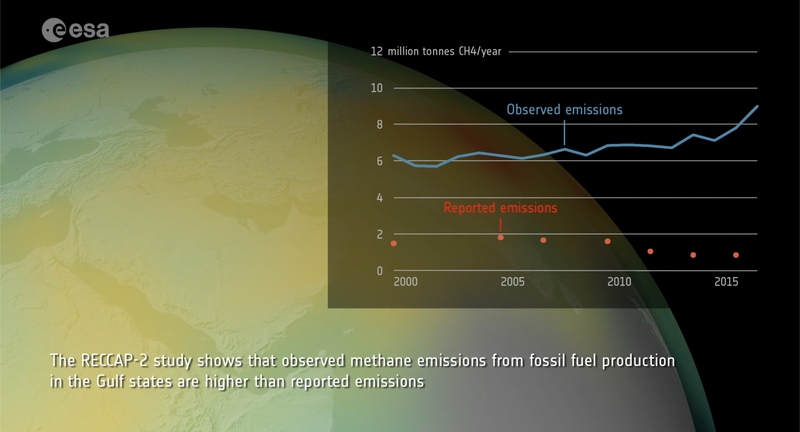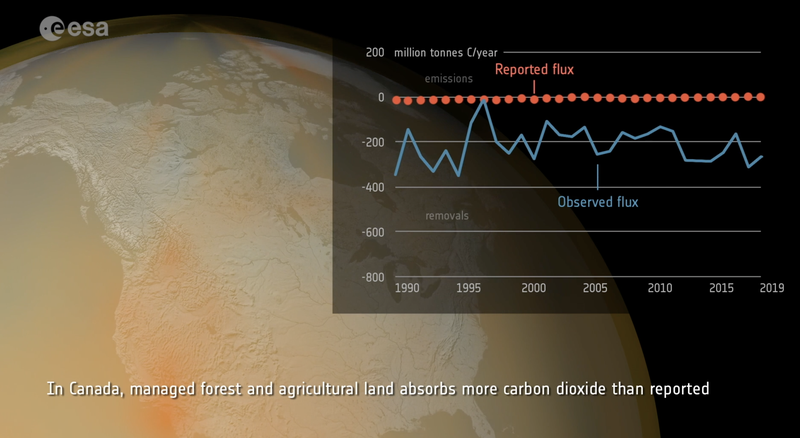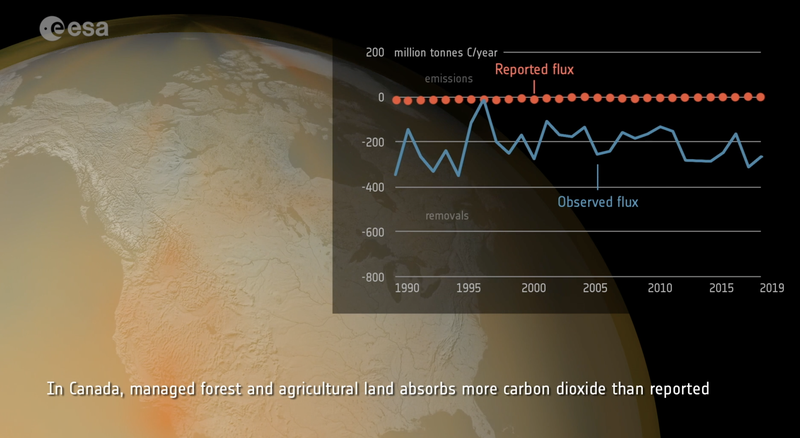9 de noviembre de 2022
Estimating national greenhouse gas emissions and sinks for the Global stocktake
Results of RECCAP-2 on show during COP27 Earth Information Day
Achieving net-zero by the second half of the century is considered vital if global temperatures are to remain well below the two degrees rise (relative to pre-industrial levels) prescribed by the Paris Agreement. From their vantage point in space, satellites, provide a unique means of tracking progress towards achieving this balance between GHG emissions from sources and removal by sinks. How space-based approaches can support the UN Global stocktake starting in 2023, are the focus of technical discussions during Earth Information Day [9 November] at COP27, and feature results from the trailblazing ESA project, RECCAP-2.
Constraining the carbon budget
Research from the REgional Carbon Cycle Assessment and Processes project is informing global climate policy by constraining the carbon budget – the remaining future emissions available before the warming limits laid out in the Paris Agreement are breached. The project's newly developed methodologies however, are also paving the way for countries to also improve checks and consistency of national GHG inventories used by the UN to assess collective action towards net zero.
The research team have employed atmospheric inversions, a technique that combines satellite measurements of atmospheric carbon dioxide and methane, and in-situ measurements of nitrous oxide, with a model to determine the movement or ‘flux’ of these greenhouse gases between the land surface and atmosphere. This information can be used to assess changes in the rate of GHG removal from the atmosphere by sinks such as forests for example and so helps inform the trajectories of the carbon budgets and helping policy makers roadmap future action.
Estimating national emissions
Importantly, the team have used these methods to estimate emissions at the national scale and to compare them with national GHG inventories. In doing so, they provide the ability for countries to check, using independent observations, that they are delivering on their carbon reduction commitments under the Paris Climate Agreement.
Currently, countries use estimates of sector-based activity are used to compile their national greenhouse gas reports, combining activity statistics with emissions factors. These estimates are periodically, these are submitted to the UN and are used to assess collective progress as part of the UN Global Stocktake.
Comparing inversions with inventories
This new RECCAP-2 approach, being based on observations provides, a yardstick from which to compare the national reports. Recently published results show significant discrepancies between these inversion values and the corresponding national reports were found.
Methane emissions were found to be higher using the inversion method compared to most national reports. In particular, emissions from oil and gas extracting states in Central Asia and the Gulf were several times higher than officially reported.

Absorbing 1.4 billion tonnes of carbon per year, the observed size of the global land carbon sink comprising ecosystems in both managed and unmanaged land, was several times larger than the 0.3 billion tonnes of carbon per year obtained by summing up countries’ reports.

Underreporting of this carbon sink was most evident for temperate and northern hemisphere countries, such as Canada and across the European Union.

In Brazil, this top-down approach shows increasing emissions from natural ecosystems that fall outside the inventory reporting protocol.
A strength of the 'inversion' approach is that it provides the full picture is observable from space. Unlike national reporting guidelines, the inversion method captures seasonal and interannual extremes, such as drought and major wildfires, which are expected to increase in both frequency and severity as global temperatures ratchet upwards.
Philippe Ciais, from the Université Paris-Saclay, said, “The proposed method of using atmospheric inversions paves the way for countries and the global community to improve checks and consistency of national inventories to more accurately reflect global emissions.
“If regularly applied, this will not only improve transparency in the accounting process but will also improve the effectiveness of mitigation policy and progress by individual countries to meet their pledges as part of the Paris Climate Agreement.”
Video: Understanding the carbon cycle.
Ana Bastos from the RECCAP-2 project explains how observations are helping to constraint the carbon budget and inform GHG mitigation policy
References
1 Deng, Z et al (2022) Comparing national greenhouse gas budgets reported in UNFCCC inventories against atmospheric inversions. Earth Syst. Sci. Data, hhttps://doi.org/10.5194/essd-14-1639-2022
2 Bastos et al. (2022) On the use of Earth Observation to support estimates of national greenhouse gas emissions and sinks for the Global stocktake process: lessons learned from ESA‑CCI RECCAP2. Carbon Balance and Management. https://doi.org/10.1186/s13021-022-00214-w

